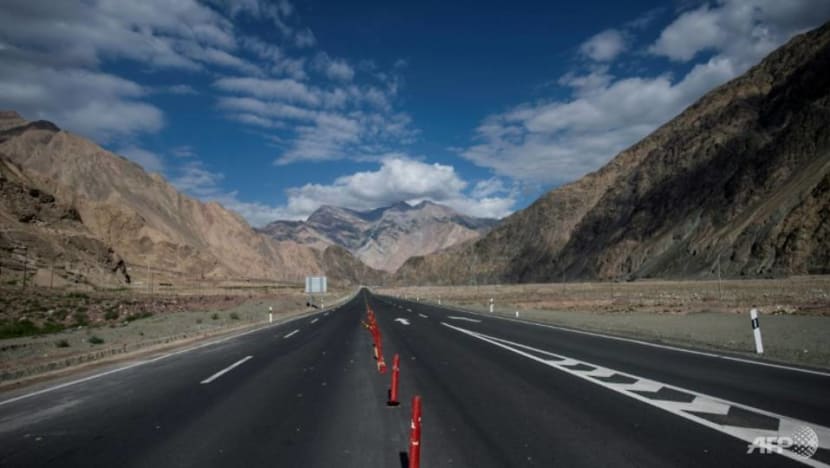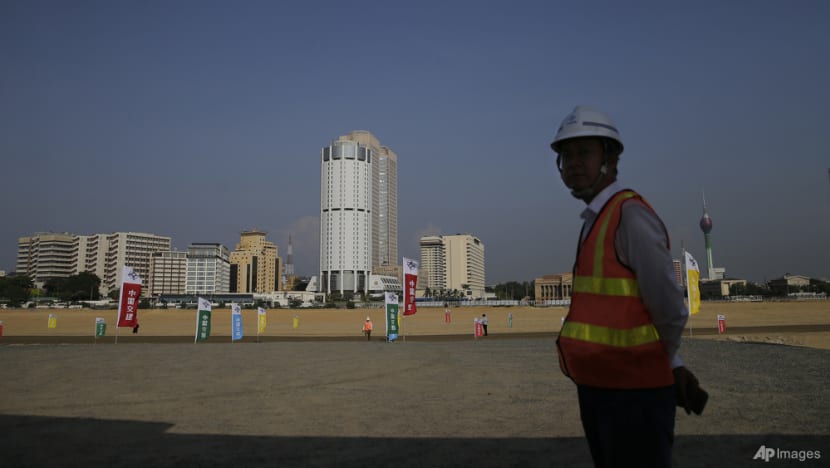Belt and Road Initiative boosts China's clout overseas, but concerns like debt-trap diplomacy remain: Observers
Lending has slumped and projects are stalled. Several partner countries are deep in debt, reflecting cracks in the sustainability of Beijing's lending practices.

Central Asia has become key to China's trillion-dollar Belt and Road Initiative, a defining geopolitical project for President Xi Jinping. (File photo: AFP/Ludovic Marin)
China’s ambitious Belt and Road Initiative (BRI) may have boosted the country’s global political clout, but doubts remain over the viability of the massive development strategy once hailed by Chinese President Xi Jinping as the “project of the century”.
Ten years have passed since China rolled out the infrastructure and investment project aimed at improving regional cooperation through better connectivity among countries lying on the ancient Silk Road and beyond.
The global initiative has helped pave the way for the expansion of China's worldwide reach, while also offering a golden opportunity for lower-income countries.
The Belt is a network of overland routes that serve as China's gateway across central and south Asia, the Middle East and into Europe, while the Road is made up of maritime lanes that connect the mainland to Southeast Asia, Africa and Europe.
STRONG DIPLOMATIC SUCCESS, BUT ISSUES REMAIN
The BRI was started in 2013, when Mr Xi highlighted the need to establish a new trade route modelled after the original Silk Road, which connected China and the Far East with the Middle East and Europe.
It laid the building blocks for his legacy project, a massive infrastructure development network designed to re-route global trade.
The project has largely been a strong diplomatic success for China, observers told CNA’s Asia First on Monday (Oct 16).
However, the country’s own economic growth is losing steam and the COVID-19 pandemic's fallout remains.
Lending has slumped and projects are stalled. Several partner countries are deep in debt, reflecting cracks in the sustainability of Beijing's lending practices.
“Like many (major infrastructure) projects, what turns out in the end is not always going to be what was initially advertised. That is the same thing for the BRI,” said Associate Professor Chong Ja Ian from the National University of Singapore.
“Because infrastructure is hard. To really put a lot of money into places that are less developed, where governance structures are a bit weaker, that's pretty risky.”
The project had expected to run into various issues such as social pushback and environmental concerns, said Dr Chong, whose research and teaching focuses on international relations.
“But what's interesting is, like many other great powers, China had this sort of idea that it could sort of change the world. So China has gained influence to be sure, but it's not the kind of unmitigated good that I think Xi Jinping initially touted the project to be.”
DEBT-TRAP DIPLOMACY
The BRI has also attracted accusations of so-called debt-trap diplomacy, security threats and counter-initiatives by the West.
“I don't think it was a sort of intention on the side of Beijing to sort of trick or to hoodwink. But I do think that there was a lot of over-optimism,” said Dr Chong.
“I think that some of the expectations about how the loans will be serviced, about the returns on these investments were done in a way that perhaps could have had more due diligence.”
He noted how Beijing has been pushing out the BRI as having no strings attached, meaning they “would have fewer requirements on some of these governance and due diligence issues”.
“But those things are in place for a reason,” added Dr Chong.
“Experience has shown that even when you have these things in place, it's a highly risky proposition when you have major infrastructure investment.”

The Western narrative of China's debt-trap diplomacy, where the country supposedly ensnares poorer recipient countries with loans they are unable to repay, is “not a fair terminology”, said former United States under secretary of commerce for international trade Frank Lavin.
“I don't think it was designed to be a debt trap. I don't think that was the purpose. But if the party giving the loan overshoots and the party receiving the money willingly complies with it, then you end up with too much debt and you end up with infrastructure that isn't used.”
He cited an example of how a recipient country with initial plans to improve international airport capacity could end up taking on a larger debt when the economy or tourism softened due to the COVID-19 pandemic.
“So somebody's got to come to terms with this mismatch between what we are doing and what we really need,” said Mr Lavin, a visiting fellow at public policy think tank Hoover Institution.
“Trap is really a loaded word, because it implies that from the start, from the get-go that China was trying to trick these countries. I don't think that was the case at all.
“I think it was basically good faith efforts, but the market shifted or the projections were just too robust than what was really needed.”

For instance, the China-Pakistan Economic Corridor, a flagship project under the initiative, has failed to spur substantial economic growth in Pakistan.
The US$65 billion injection is the largest Pakistan has ever seen and the biggest overseas investment China has made.
It addressed Pakistan's infrastructure gaps, established special economic zones and expanded the Gwadar Port, which is strategically located along the Arabian Sea.
The corridor had been seen as a game-changer for Pakistan. But last year, the country spiralled into its worst financial crisis in decades and its ballooning loans from China are believed to have compounded the issue.
Related:
“One of the challenges with infrastructure is you're placing a bet,” said Mr Lavin.
“You're placing a 10 to 20-year bet, and infrastructure projects tend to overshoot. They tend to come to fruition when there's a very high rate of growth.”
INCREASING CHINA’S CLOUT GLOBALLY
Today, the BRI spans three continents. It involves 147 countries, two-thirds of the world's population and 40 per cent of the global gross domestic product (GDP).
“I think it's a useful opening for Chinese diplomacy. I think it enhances relationships,” said Mr Lavin.
“It improves the conversation from Beijing's point of view, but I don't think it necessarily creates a regional consciousness or regional desire to work together.”
The BRI diversifies China’s routes for trade and for energy imports, noted Dr Chong.
“That relieves some of the pressure and the dependence on the maritime routes that will go through the disputed South China Sea.”
The running bill is estimated to be around US$2 trillion, but the BRI is expected to carry a price tag of up to US$8 trillion throughout its lifetime.
China’s ability to invest in other countries, especially in developing parts of the world, has allowed them to gain quite a lot of traction, said Dr Chong.
“That's really increased China's clout internationally.”















